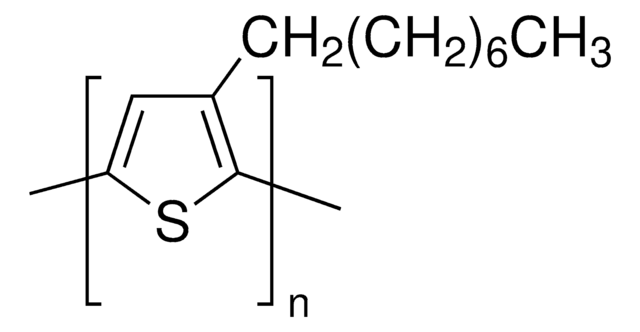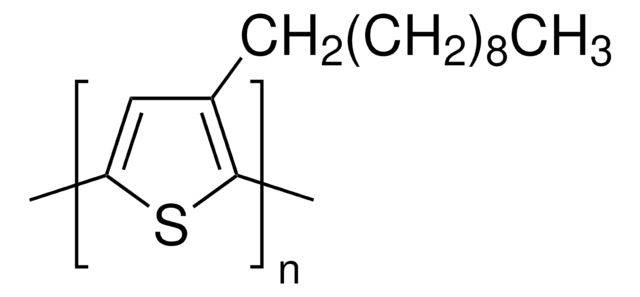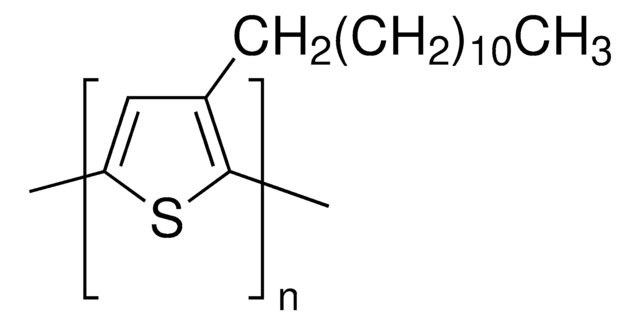682799
P3OT
regioregular, electronic grade, 99.995% trace metals basis, average Mn ~25,000
Synonym(s):
Poly(3-octylthiophene-2,5-diyl)
About This Item
Recommended Products
material
black
grade
electronic grade
description
Band gap: 1.7 eV
Assay
99.995% trace metals basis
form
solid
mol wt
average Mn ~25,000
mp
198-211 °C
Orbital energy
HOMO -5.25 eV
LUMO -3.55 eV
OPV Device Performance
ITO/PEDOT:PSS/P3OT:PC61BM (1:2)/LiF/Al
semiconductor properties
P-type (mobility=10−4 - 10−1 cm2/V·s)
General description
Application
Rechargeable battery electrodes, electrochromic devices, chemical and optical sensors, light-emitting diodes, microelectrical amplifiers, field-effect transistors and non-linear optical materials.
Used in organic field-effect transistors and in polymer-based solar cells.
Features and Benefits
Storage Class Code
11 - Combustible Solids
WGK
WGK 3
Flash Point(F)
Not applicable
Flash Point(C)
Not applicable
Personal Protective Equipment
Certificates of Analysis (COA)
Search for Certificates of Analysis (COA) by entering the products Lot/Batch Number. Lot and Batch Numbers can be found on a product’s label following the words ‘Lot’ or ‘Batch’.
Already Own This Product?
Find documentation for the products that you have recently purchased in the Document Library.
Customers Also Viewed
Articles
The application of conducting polymers at the interface with biology is an exciting new trend in organic electronics research.
Organic materials in optoelectronic devices like LEDs and solar cells are of significant academic and commercial interest.
Organic materials in optoelectronic devices like LEDs and solar cells are of significant academic and commercial interest.
Organic materials in optoelectronic devices like LEDs and solar cells are of significant academic and commercial interest.
Our team of scientists has experience in all areas of research including Life Science, Material Science, Chemical Synthesis, Chromatography, Analytical and many others.
Contact Technical Service









